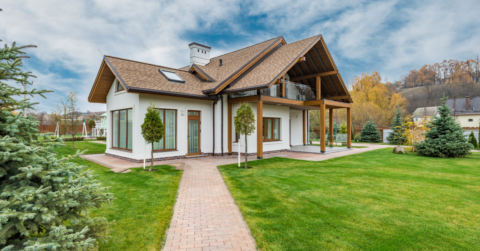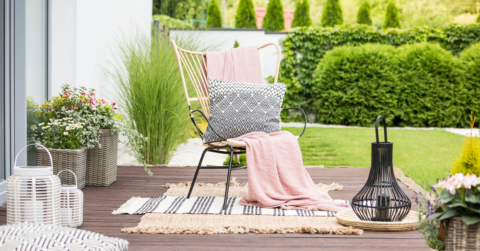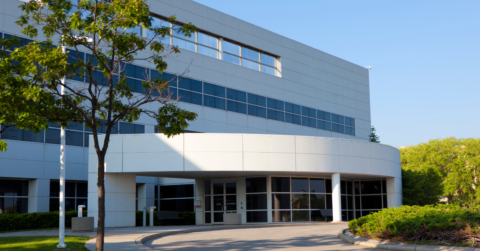3 Ways to Prepare Your Home to Sell

If you’ve finally decided to list your home for sale, it can be a daunting task trying to figure out how to best prepare your home before listing.
5 Ways to Create Usable Outdoor Living Space Without Breaking the Bank

The summer is a great time to remind us that our backyard can be much more enjoyable. The backyard is meant to entertain the masses.
Beat the Heat: Is a Home with a Pool Right for Your Family?

When summer comes around, and temperatures begin to rise, your thoughts likely turn to ideas for how to keep cool. If you are buying a new home, you may even consider one with a swimming pool on the property.
7 Ways To Keep Long-Term Commercial Tenants

Finding new people for a space can be much more expensive than holding onto a tenant thinking about leaving, while properties without tenants essentially lose money. The true test of a rental property owner is to keep the occupants you have.
Help in a Hot Market: 3 Ways To Help Your Clients Navigate a Changing Housing Market as an Agent

In addition to understanding the demands and trends of the real estate market, you must be able to guide your clients through the homebuying process.
Welcome Home to Amelia Street

If you’re searching for a stunning historic home with charm, character, and amenities, you’re in for an absolute treat with this one-of-a-kind property in Fredericksburg, VA. Conveniently located on Amelia Street in downtown Fredericksburg, this home will captivate you.
Your Home can Double as a Historic Landmark
The history behind this home is rich; it is known by the name ‘Smithsonia.’ A landmark in Fredericksburg for over 170 years, Smithsonia is a Greek Revival Style structure that did not start as a private home.
Originally, the Presbyterian church created Smithsonia so that it would function as a Female Orphan Asylum in 1834. The Asylum was meant to be where girls who went to a charity school could live. However, Smithsonia functioned as a hospital during the civil war as most large buildings in Fredericksburg were transformed into hospitals during that time period.
Not long after the Civil War, Miss Rebecca Smith turned Smithsonia into a boarding house for elderly women. Smithsonia is called ‘Smithsonia’ in honor of Miss Rebecca Smith. After the boarding house closed, Fredericksburg College used the home as a dormitory for boys until the college ceased operations.
There is graffiti on the home’s bricks, evidence that the home was not used until William E. Lang purchased it in 1917. The Langs lived in Smithsonia until 1942 when Dr. Earle R. and Jane Ware purchased the home. A different family acquired the home from the Ware’s estate, and in 2007, the current owner took over.
The Amenities that Will Make This House Your Home
Smithsonia has various features that will make any prospective homeowner swoon. For example, the home has a conservatory, a formal garden, and a carriage house around back. The outside of the home looks nearly identical to its original state, but the previous two owners have upgraded the inside of the home.
On the outside of the home, you’ll find Doric columns and a full-facade porch with a wide band of trim. The front door is paneled, and over the front door, there is a decorative transom, which lets in natural light. There is a raised first floor that sits over an English-style basement. Plus, there is an informal room to eat and a large common room, on the first floor. The house has large windows and louvered shutters. Also, there is a brick wall that encloses Smithsonia and its outbuildings.
Coldwell Banker Elite can Make Smithsonia Yours
Between the property’s history and amenities, Smithsonia is a one-of-a-kind home that is perfect for your family. If you want to learn more about Smithsonia, Coldwell Banker Elite can help you take the steps towards making this house your home. To inquire, head over to the listing (we’ve linked it here) and send Evan Sullivan, the listing agent, a message!
Coldwell Banker strives to connect people like you with homes like Smithsonia. Contact us today, and you’ll be one step closer to moving into your dream home.
The Pros and Cons of Buying a Vacation Property

Are you interested in investing in a relaxing, beautiful vacation property? While this is a dream for many, keep in mind that buying a vacation property takes time and consideration. Keep reading to find out if it is right for you!
Pros of Buying a Vacation Property
Increase in value.
Vacation properties usually increase in value over the years, which would make your home an excellent investment.
Renting can pay the bills.
Renting your vacation home can help you make extra money when you are not using the vacation home yourself! Renting out your property to others on vacation can be very beneficial.
Enjoy a longer stay.
If you have your own property, you can stay as long as you want or as little as you want. There are no check-in or check-out times because you are the one in control!
Vacations might be cheaper.
Having a place to stay can reduce the overall cost of your vacation, especially if you travel to the property often.
Relaxation boosts.
Knowing that you have a vacation home that you can run to when you are stressed is the first step to relaxation. Owning a vacation property can help ease stress because it is an escape from your everyday life.
Cons of Buying a Vacation Property
The overall cost.
Just like with your current home, you’re going to have to pay for the mortgage, utilities, and taxes on your vacation home.
Fewer savings.
Paying for a vacation property means you have less money to save in the long run. Are there other goals that you are saving for? If so, a vacation home could get in the way of these goals.
Maintenance costs.
When you own another home, you have to keep it maintained. Think about all the ways appliances and the house can break down, and be prepared to pay for those expenses.
You may get bored in the long run.
There’s a possibility that you will grow tired of your vacation home’s location and that you might regret your purchase.
Extra Costs
HOA fees.
Home Owner Association fees often are applied to homes. Check to see how much those costs would be for your home.
Rent damage.
There is a possibility of home damage from renters. Renters are also a huge liability. Make sure you have a rental-by-owner contract for each renter.
Housing shortages.
In 2022, there is a housing shortage, which is driving the costs of vacation properties up. Keep this in mind.
Hefty down payments.
Often, vacation properties require a large down payment. Make sure you have enough to cover the 25% to 35% down payment.
Taxes.
You can most likely take advantage of a mortgage interest deduction on your vacation property. This can help lower your taxable income. If this isn’t an option, you may be able to write off the interest on a home equity loan. If you don’t use your vacation home enough, the IRS may not consider your home a second residence and more of an investment property, which will change your taxes. It is highly recommended to speak to a tax professional before purchasing a vacation property to evaluate all of your options.
Don’t count your chickens before they hatch.
Many owners assume that they will use rental income to pay for their vacation property, but rental payments don’t always pan out like they should. Never rely on rental income fully pay for your vacation home. The property can become vacant, leaving you with the full mortgage payment.
Hopefully after reading, you feel more prepared and comfortable with the costs of owning a vacation property. Weigh out the positives and negatives, and decide if a vacation home is the right choice for you! Need help? That’s what we’re here for!
Why Commercial Real Estate is Still a Good Investment in 2022

After two years of a seller’s residential market, buyers are accustomed to the effects of various COVID variants, inflation, and stock market fluctuation on the real estate industry. Low inventory, competitive offers, and inflated listing prices have become the new normal for buying a home.
While you may think the same is true for commercial real estate, trends indicate that now is the ideal time to invest in commercial properties. Whether it’s a business looking for a new place to call “home,” or a professional investment in a multifamily property, commercial opportunities like these will become more common in 2022.
No one wants to jump in without doing extensive research first when it comes to investing. To help you do your due diligence, we’ve outlined six trends below that indicate that now is the time to invest in commercial real estate.
Rental growth will drive market expansion
With the housing market still being a seller’s market, more prospective buyers are deciding to rent a little while longer, which is an opportunity if you are in the market for a multi-family investment. DealPath reports that the rental market will grow because of the growing economy, increased employment, rising wages, and healthy savings. When it comes to businesses and renting, property companies are struggling to commit to a long-term lease, given the uncertainty in the world. A commercial property with a shorter lease could be favorable to many business tenants.
Commercial capital points to continued growth
Forbes notes that Preqin reported that commercial real estate funds collected over $152.2 billion through fundraising through mid-October, which is just waiting to be deployed. That indicates that there will be substantial growth in commercial projects across various industries over the next year because there are funds to support the growth.
Smaller markets will outpace major markets
As a result of the pandemic, many residents fled major cities and ended up in smaller markets. With this migration, more businesses will want to set up offices outside of the major cities they once resided in. Their office rent would be cheaper in a secondary market like Phoenix or Charlotte, but it’s also where their employees are.
Office demand is increasing
Two years ago, businesses shut their doors, and now many businesses are offering a hybrid workspace. With even a gradual return to the office, businesses will need a physical workplace for their employees to return to. JLL reports that commercial leasing rose by 28.7% in Q2 of 2021. With Google’s recent announcement, reported by the Wall Street Journal, that they are looking to purchase a New York City office building for $2.1 billion, we anticipate other companies will follow suit.
Proptechs are growing in popularity
The Deloitte Center for Financial Services reported that their survey of commercial real estate executives indicated that 3/4 of respondents work for companies planning to expand partnerships with, or invest in, proptech this year. In 2021, real estate and proptech raised about $21 billion in 2021, according to Crunchbase. This growth highlights that more deals will be made as businesses look to utilize various property technology with their commercial investments.
New markets are expanding
While e-commerce outperforms physical retail locations, these physical locations won’t disappear. Instead, retail shops will be reimagined as distribution centers, pick-up locations, or showrooms. At the same time, the life sciences industry has received increased attention during the pandemic. These businesses have a universal goal of researching and developing medicines and treatments that can help us live long and healthy lives. These businesses have gained more and more funding and as a result, will need more and more office space. Another area expected to boom is operational real estate like storage, senior living facilities, and student housing. If you keep your eye on expanding markets, you’ll find an opportunity for commercial investment.
If you’re ready to take the plunge with a commercial real estate investment, Coldwell Banker Commercial Elite can help. Our experienced agents know the market inside and out and can help you find a property that meets your investment goals.
To get started on your search, reach out to a member of our team today!
5 Easy Projects to Boost Your Home’s Curb Appeal

Have you been thinking that your home’s curb appeal could use a bit of sprucing up? Lots of homeowners would like to make improvements to their home’s exterior, but they don’t quite know where to start.
Whether you’re considering selling your home or would just like to update it a bit, improving your home’s exterior doesn’t necessarily take a lot of time or money. Some fairly quick, simple changes can make a big difference in your home’s appearance. Here are five easy projects that can boost your home’s curb appeal.
1. Paint the front door
One of the first things that people see when they look at the front of your house is your front door. A new coat of paint on your front door can give your home a fresh new look and style.
There are lots of options when it comes to painting your front door. You can go bold and eye-catching to enhance your front door as a visual centerpiece, or more subtle yet classy for an understated but stylish look that complements the rest of your home’s colors.
Many homeowners are opting for bright colors, like blues, greens, reds, and even oranges to give their front door some fresh new “pop.”
2. Display or Replace House Numbers
You may not think much about it, but your house number is one of your home’s most important features for visitors as well as delivery workers. Those numbers are one of the first things people look for in the front of your home to identify it.
Giving your house numbers a makeover is a quick, easy update that can make a big difference. Replace your old, worn-out, or tarnished numbers with an updated metal or wood style and you’ll notice the difference—and so will your visitors.
3. Add Greenery and/or Flowers
Greenery and flowers are common decorative features, but many homes could use some updating in the area of plants and flowers. Trimmed, well-kept greenery, like shrubs or ground ivy, can give a natural, welcoming feel to your home. Flowers can provide a cheery first impression.
While planting is certainly an option, you don’t even need to get you’re your shovel to add some greenery or flowers to your outdoor space. A few well-placed potted shrubs or flowers are quick, easy options. Bright, low-maintenance plants are best for sprucing up your home’s curb appeal.
4. Add Functional and Decorative Lighting
Lighting is a versatile way to improve your home’s curb appeal. You can go subtle or bold, or anything in between.
You might consider replacing old, worn-out lighting fixtures with a newer, more contemporary style. Changing out your bulbs for more energy-efficient LEDs can also give you more options for brightness or color tones.
Some string lights can give a soft, festive feel, especially on a front porch. Adding some solar light along your front sidewalk or flower bed can give a welcoming look.
5. Replace Mailbox
Like your house numbers, your mailbox is one of the first things that people see when they look at your home. A mailbox update could be a fun, quick repaint with fresh, bright colors. Or you could replace your mailbox altogether for one with a new shape and size.
If you buy a new one, be sure to buy an approved mailbox and follow height regulations. Curbside mailboxes are required to be mounted and the bottom must be 42-48 inches above the ground
Pet-Proofing Your Home for Your New Best Friend

In the spirit of National Pet Month, we’re exploring how you can make sure your home is safe for your new furry (or not so furry) best friend! Dogs and cats, as well as all kinds of other pets, are naturally curious and can get themselves into trouble or even danger if your home isn’t properly pet-proofed. Just like you would with a new baby, you should take the time to look at each area of your home with a critical eye to ensure that is safe for your pet.
Whether you are a new homeowner, a new pet parent, or both, you may be unsure of where to begin. We’ve outlined what to look for in each part of your home to simplify pet-proofing.
Yard
Your dog, and even maybe your cat, will spend a lot of time out in your new yard for exercise and fun. Having a fenced-in yard will keep many threats away like stray animals, but you’ll need to pay special attention to what is within that fence. Some additional safety measures you should take include:
- Examining the plants in your yard and removing any poisonous ones,
- Never leaving a pet unattended around a fire pit (when in use) or by an unfenced pool,
- Schedule regular flea and tick control services,
- Store any chemicals for lawn treatment in an enclosed shed or high up in your garage,
- And keep your pets away from the yard while the lawn is being treated with fertilizers, pesticides, or other chemicals.
Garage/Basement
Often what you use in your yard (or use to maintain your yard) is stored in a garage or basement. Just like with your yard, there are harmful chemicals and other hazards that come with keeping your new yard in great condition. While your pet likely won’t wander into this space often, you’ll still want to take precautions. To keep your pet safe, be sure to:
- Store any loose hardware in a jar with a lid,
- Always store chemicals in a high, closed cabinet,
- Check the floor of your garage for spilled chemical leaks,
- And always check the car engine by banging on the hood before starting your car.
Kitchen
Beyond just being able to jump on counters, kitchens are full of hazards like trash cans, toxic food, and cleaning chemicals. When it comes to pet-proofing your kitchen, be sure to:
- Keep cleaning products in a childproof locked cabinet,
- Never leave food unattended and always put food in a covered container,
- And only opt for garbage cans with a secured lid.
Bathroom/Laundry Room
At first glance, it may seem like the most trouble a pet could get into in a bathroom is just splashing water around, but often bathrooms (and laundry rooms) also contain cleaning products and harmful chemicals, medicine, and more. Even just drinking the water from a toilet bowl could be fatal to your dog. To ensure your pet is safe when they wander into your bathroom, you’ll want to:
- Always keep medicine in a closed cabinet,
- Close the toilet lid when not in use,
- Ensure all bathroom cleaners, bleach, laundry detergents, and fabric softeners are in a childproof locked cabinet,
- And always check the washer and dryer before starting a cycle (and always keep the washer and dryer doors closed when not in use).
Living Room
For most families, the living room is where you spend most of your time. You watch tv together, you relax together, and your children play with their toys there. Your pets are part of your family, so they participate in this regular family time. To make family time safe for all, you’ll want to:
- Ensure any electric cords are tucked away and out of reach,
- Always make sure that there is a protective screen in front of a fireplace if you have one,
- Put away anything that could get knocked over if a pet were to jump or reach it,
- Never leave a candle unattended,
- Cover any heating and air vents,
- Make sure your plants are not poisonous to dogs or cats,
- And always put away your child’s toys after they are done playing.
Bedroom
Bedtime should be a time for unwinding. What can make bedtime not peaceful, is if your pet suddenly gets hurt. That’s why you’ll want to be sure that you:
- Keep any wires out of reach,
- Double-check your drawers and closet before closing,
- Keep your laundry and shoes behind a closed door,
- Store jewelry, hair products, medications, and lotions in a closed container or cabinet,
- And if your bedroom is on the second floor, keep the window closed.
National pet month is a time to celebrate our furry friends that are a part of our family. Celebrate your pet by ensuring that your new home is safe for them.
If you’re on the market for a new home for your pet, or if you have questions about how to improve your home for your family, Coldwell Banker Elite can help.

 Facebook
Facebook
 X
X
 Pinterest
Pinterest
 Copy Link
Copy Link




